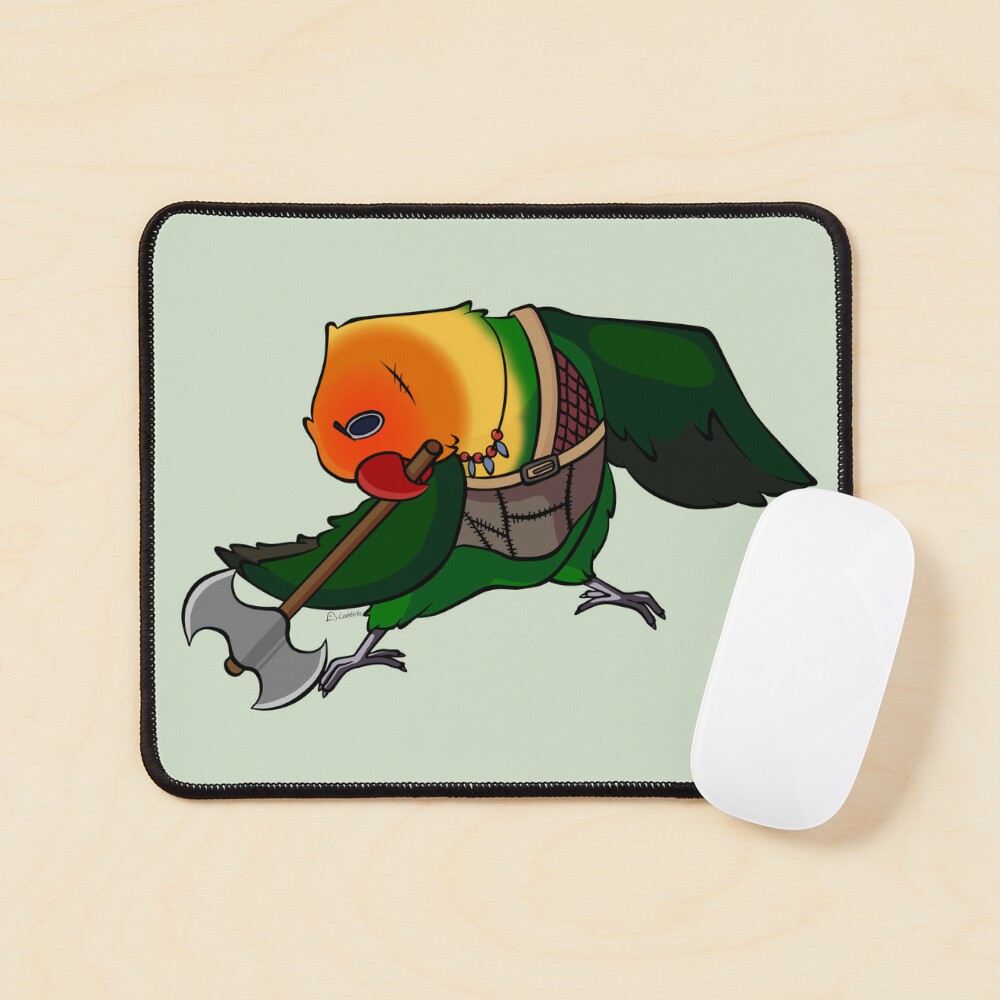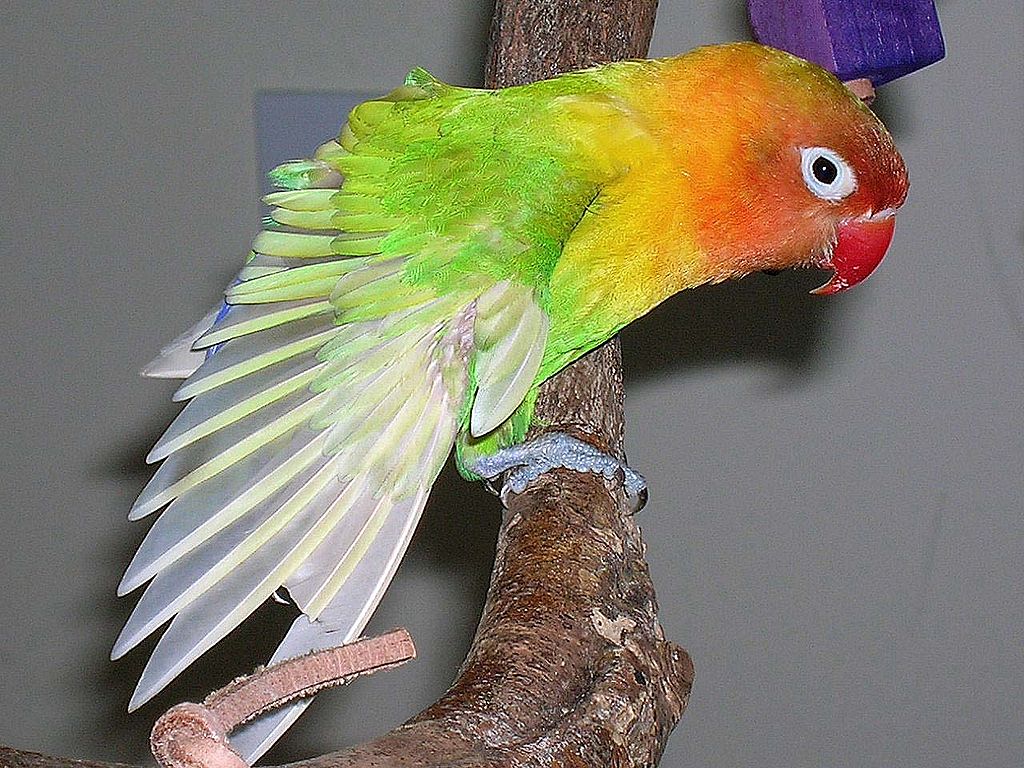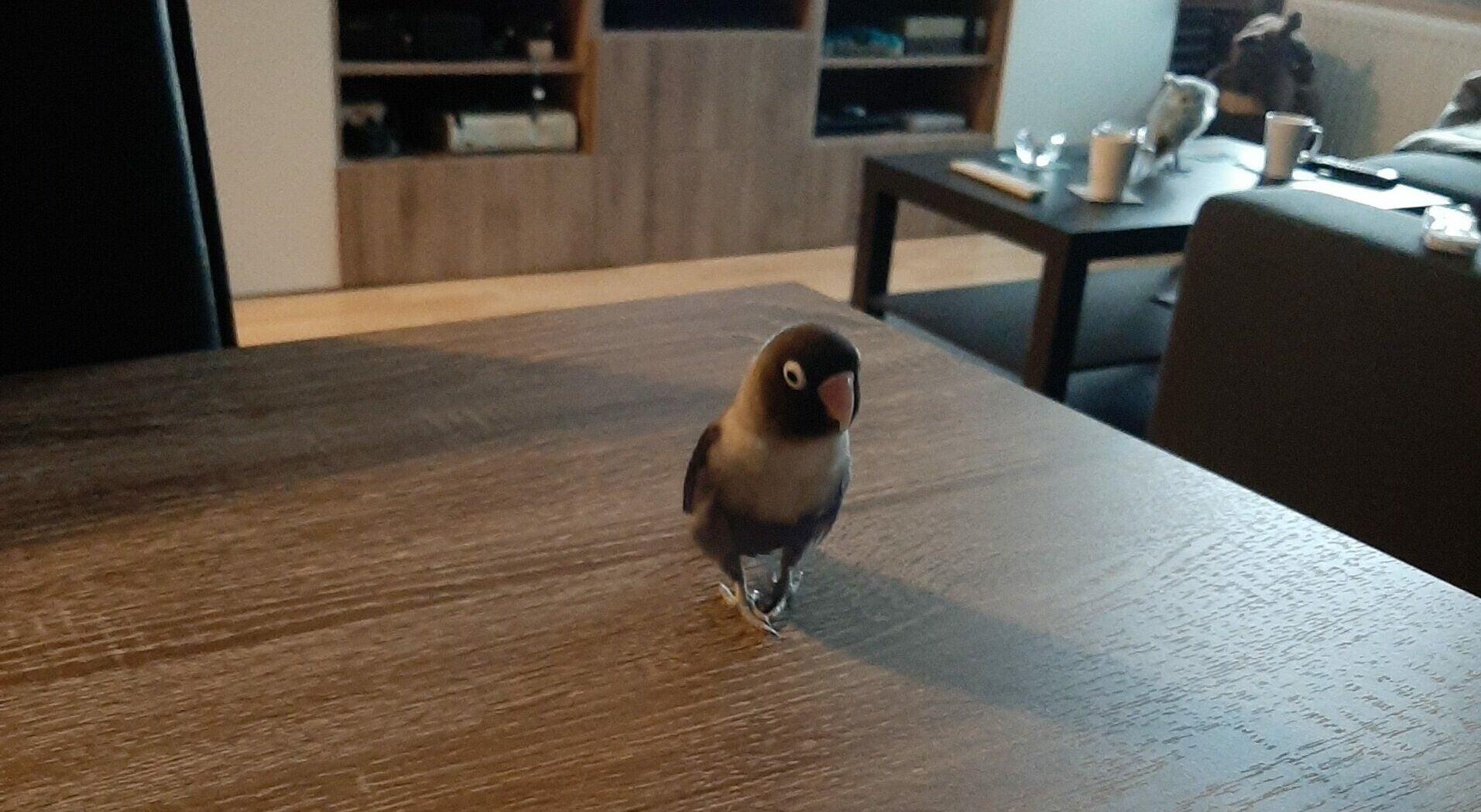What species of lovebirds are there
There are a total of 9 species of lovebirds with 9 subspecies. However not all lovebird species are able to be kept as pets.
1. Rosy-faced/peach-faced lovebird (Agapornis roseicollis)
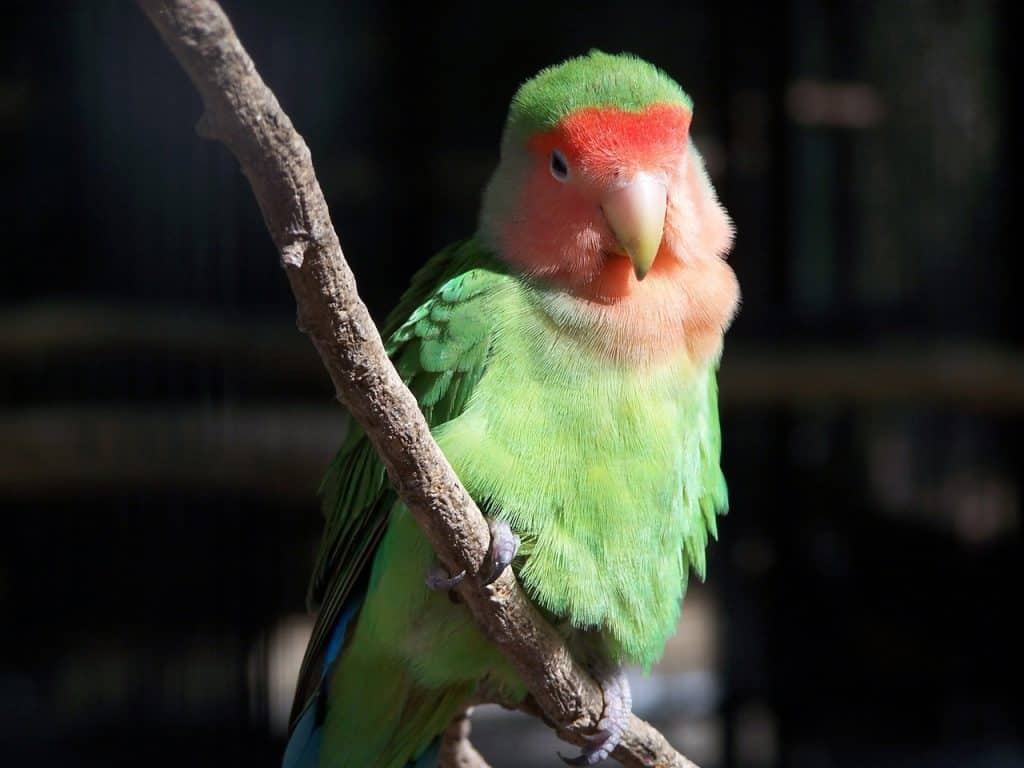
This species of lovebird is named after their peach/rosy collared heads. In the wild their plumage is mostly green with a blue rump. Their feet are gray and they have a horn-colored bill. Male and female birds look alike and they are about 15cm long (5.9 inches).
Due to regular breeding, this particular species has a wide range of color variations. Their heads may not even be peach colored, but very light. This variety makes the species popular with breeders.
The peach-faced lovebird is if often much easier to tame than other lovebird species.
This species has two subspecies:
- Agapornis roseicollis catumbella, residing in Angola.
- Agapornis roseicollis roseicollis, residing in Namibia, Botswana and South Africa.
2. Yellow-collared/masked/black-masked/eye-ring lovebird (Agapornis personatus)
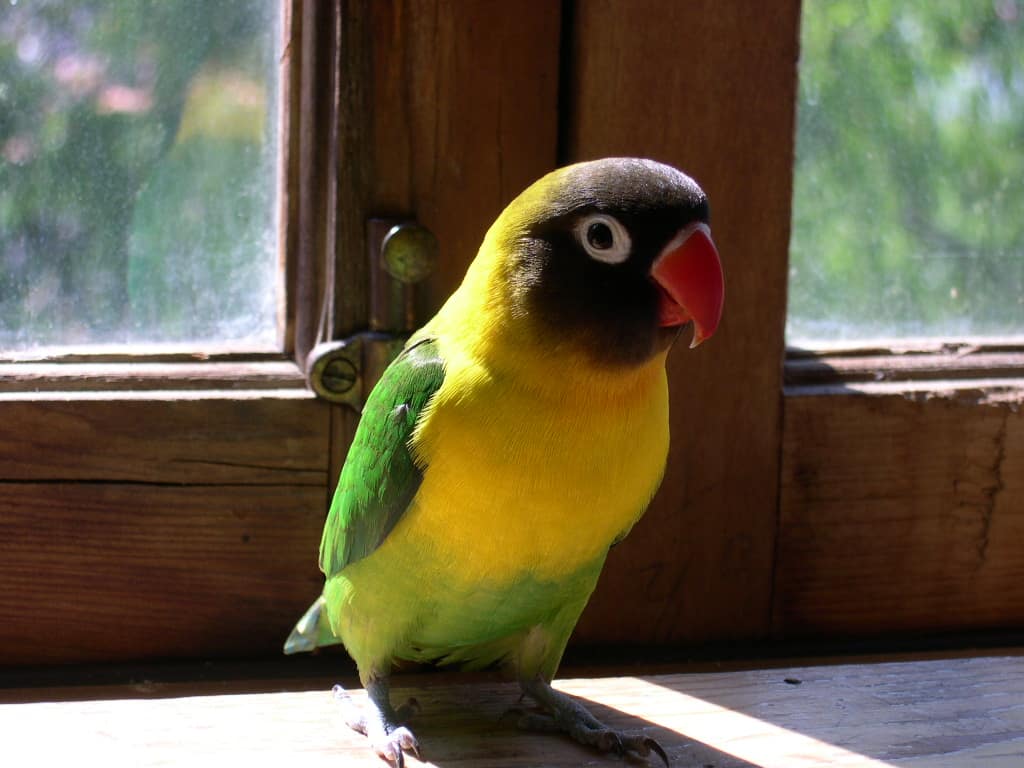
This species has several different names that all describe the species to a point as they have a dark/black colored head. The wild lovebird has a yellow collar and mostly green body. They have a white ring around both eyes. Their beaks are reddish and they have gray feet with the average size of a masked lovebird being around 14.5cm (6 inches).
There are several mutations in colour with the blue colour mutation being common in the wild, whereas the blue and yellow mutation is often bred in captivity.
There are also violet masked or mauve masked lovebirds.
The yellow-collared lovebird is known for being noisy. If you have this species on their own in their cage it is best to give them a lot of attention and toys to play with however it is best to keep them with a partner.
My bird Apache is a violet masked lovebird.
3. Fischer’s lovebird (Agapornis fischeri)
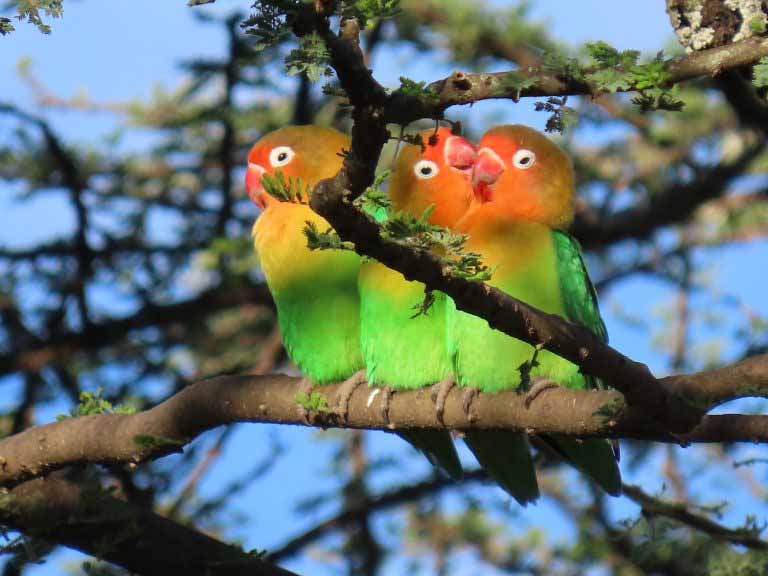
The Fischer’s lovebird is one of the smaller lovebirds, about 14 to 15 cm long (5.5 to 5.9 inches). It is named after the German Explorer Gustav Fischer. Their plumage is rainbow colored with a dark orange head that becomes golden yellow as you go down the body. Their wings, back and chest are green with the top of their head is olive green. With their red beak it makes me think of one of those layered popsicles.
This species also comes with many colur variations and it is also common to find hybrids between Fischer's and masked lovebirds, both captive bred and in the wild.
The Fischer’s species is known for being a somewhat quieter lovebird though they have a playful and energetic personality.
4. Lilian/Nyasa lovebird (Agapornis lilianae)
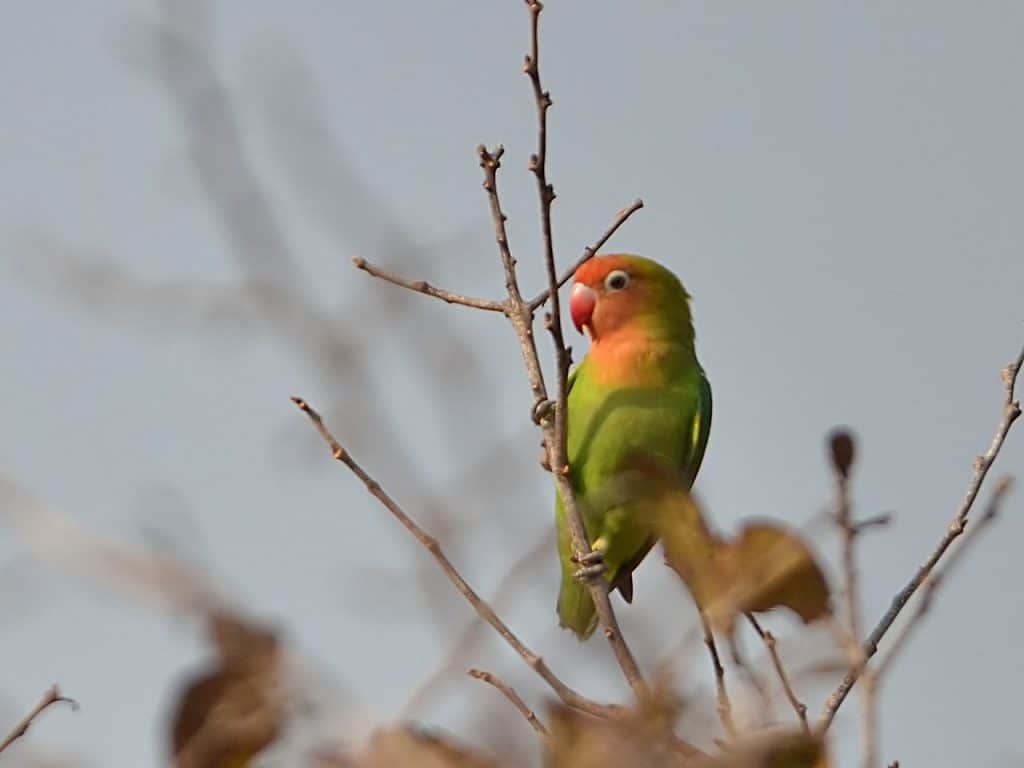
This species average length is 13.5cm (5.3 inches). It is often mistaken for the Fischer's lovebird or a peach-faced lovebird. However, the top of a Lilian lovebird is salmon pink and its throat is orange/red. The body of a Lilian lovebird is mostly green with a red beak, it also has rings around its eyes.
The Lilian lovebird is difficult to breed in captivity. This is why you rarely find them as pets.
5. Black-cheek lovebird (Agapornis nigrigenis)
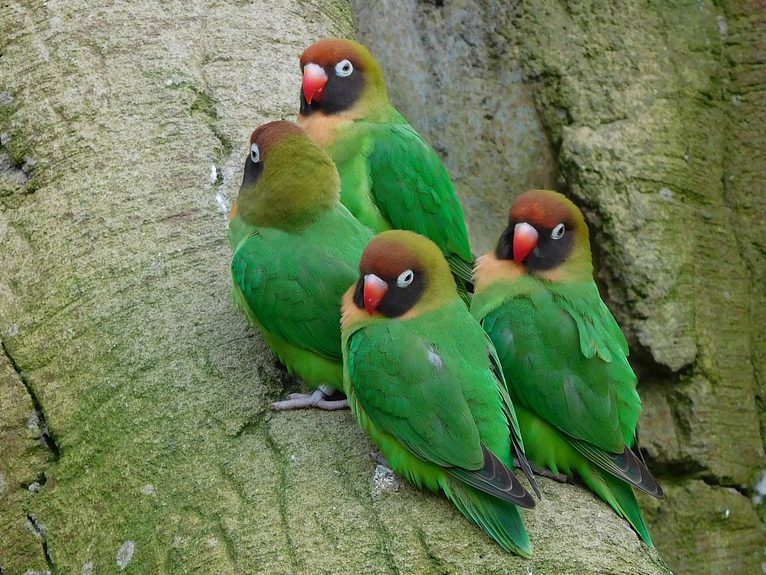
This is one of the most endangered lovebird species, which makes them very uncommon pets. It is 13 to 14cm (5 to 5.5 inches) long and just like the Fischer's and masked species it has rings around its eyes. Its face is black with a reddish-brown forehead and fore crown. Its body is mostly green in color and it has an orange patch on its throat.
An adult has a red beak, whereas juveniles of this species have a more orange bill. Juveniles will also have dull colours until their first molt.
No mutations of this lovebird species have been confirmed yet.
The black-cheek lovebird is easy to breed and they have a docile character and are peaceful in nature. Because this species is endangered, experts would like to put them into a breeding program.
6. Grey-headed/Madagascar lovebird (Agapornis canus)
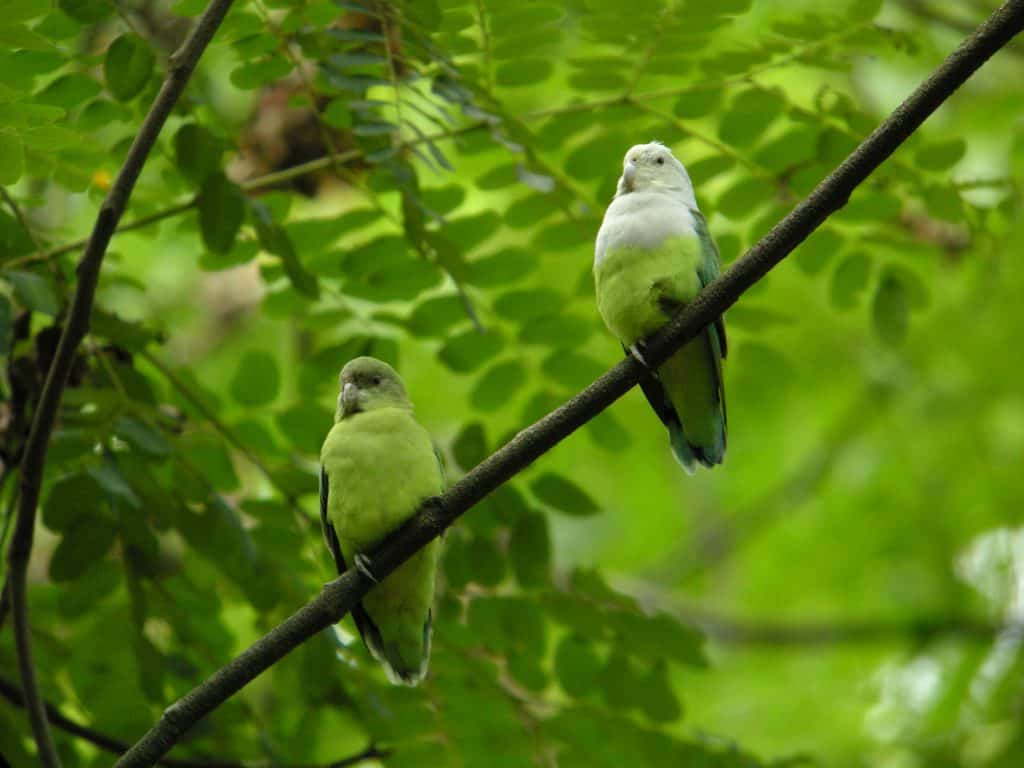
This lovebird species is native to Madagascar. Males have a light gray head and chest with a dark green back and wings. The female is entirely green with a dark green back and wings.
This lovebird is rarely seen in captivity. They tend to get scared easily in an aviary and are nervous when they are hand-fed. Because of this, they don’t make good pets.
It has two subspecies:
- Agapornis canus ablecteneus, resides in West and East Madagascar.
- Agapornis canus canus, resides in South-Western Madagascar.
7. Abyssinian/black-winged lovebird (Agapornis taranta)
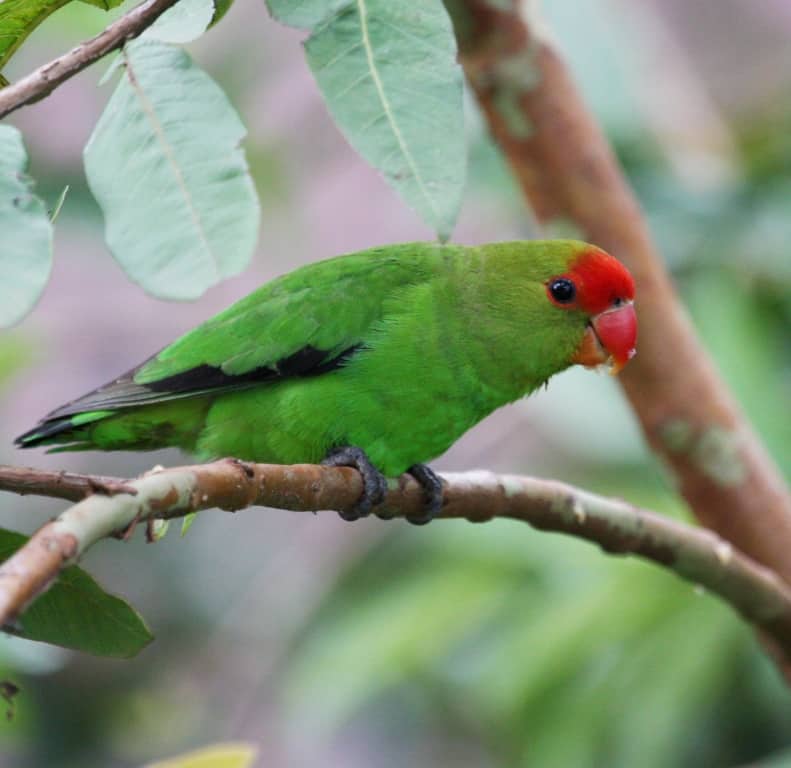
The black-winged lovebird is large with it being 15 to 17cm (6 to 6.5 inches) in size. Males and females are visually different. The male black-winged lovebird has an emerald green plumage and is lighter on the head, rump and just above the tail. It has a bright red forehead that disappears around the eyes. Females are green all over their body with darker green on the back. Both genders have a coral red beak.
This species tends to be more tolerant and less noisy than other lovebird species. They are quite active though, so they need a lot of toys to play with and enough space to move around.
Black-winged lovebirds are harder to breed, which means they come with a higher price tag, making them uncommon as pets.
8. Red-headed/red-faced lovebird (Agapornis pullarius)
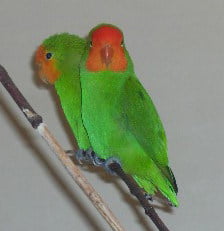
The red-faced lovebird has a bright green body with a bright red face and forehead and a red beak. The average length is 15cm (6 inches).
The female is generally paler in color compared to the male.
This species of lovebird is difficult to keep with only a handful of successful breeders, making them an uncommon pet.
An interesting little fact about the red-headed lovebird is that they can sleep upside down.
There are two subspecies:
- Agapornis pullarius ugandae
- Agapornis pullarius guineensis
9. Black-collared/Swindern’s Lovebird (Agapornis swindernianus)
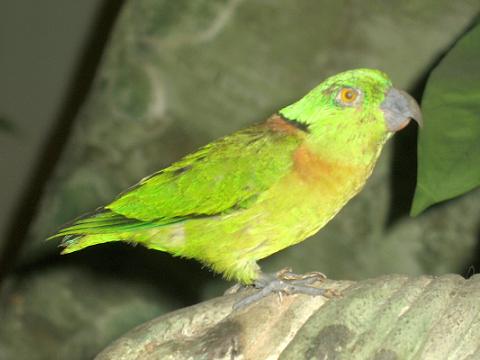
As in the name, this species of lovebirds has a black half collar at the back of their neck with a mostly green plumage, where as the head, upper body and back are slightly lighter in color. They are small, around 13 to 13.5 cm long (5.1 to 5.3 inches).
The black-collared lovebird isn’t really found as a pet. Their diet requires a native fig, which has made breeding impossible.
It has three subspecies:
- Agapornis swinderianus emini
- Agapornis swinderianus swinderianus
- Agapornis swinderianus zenkeri

